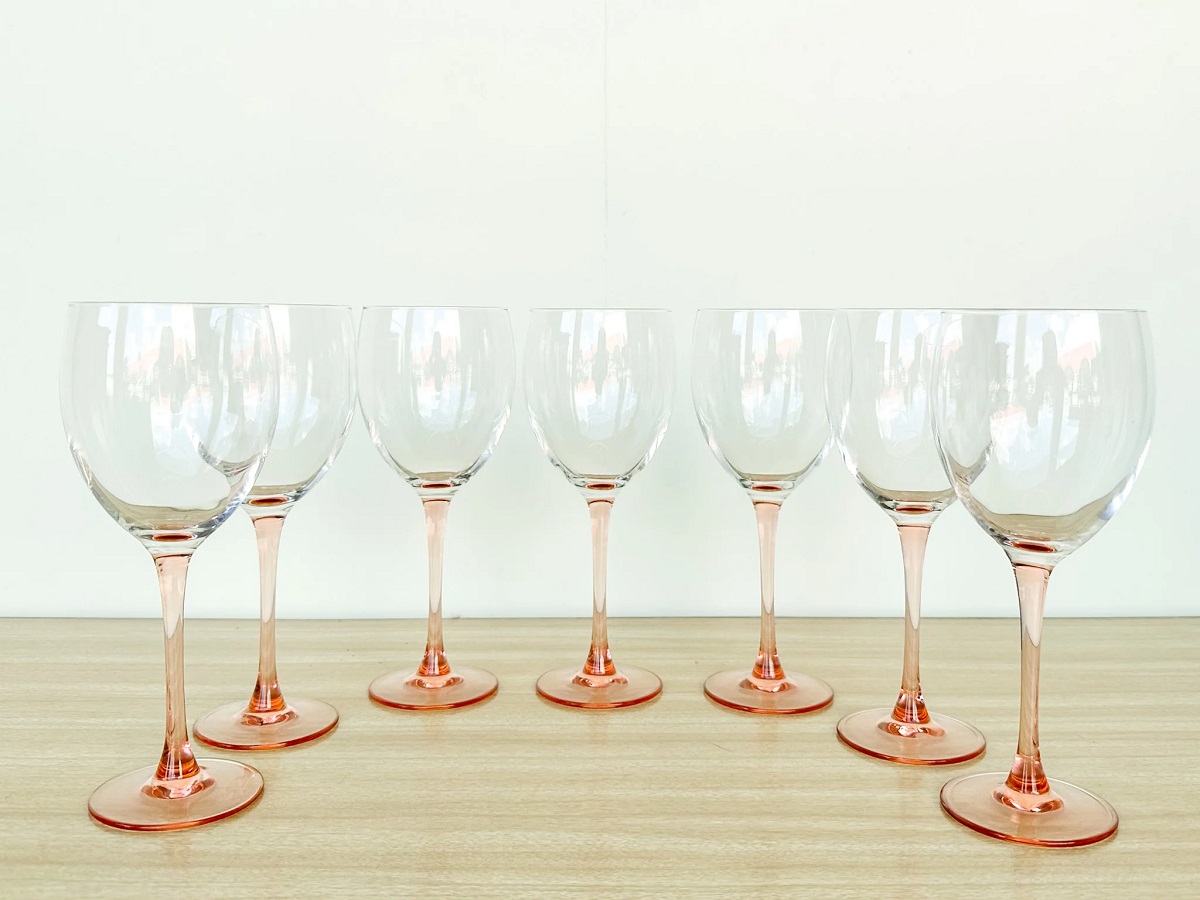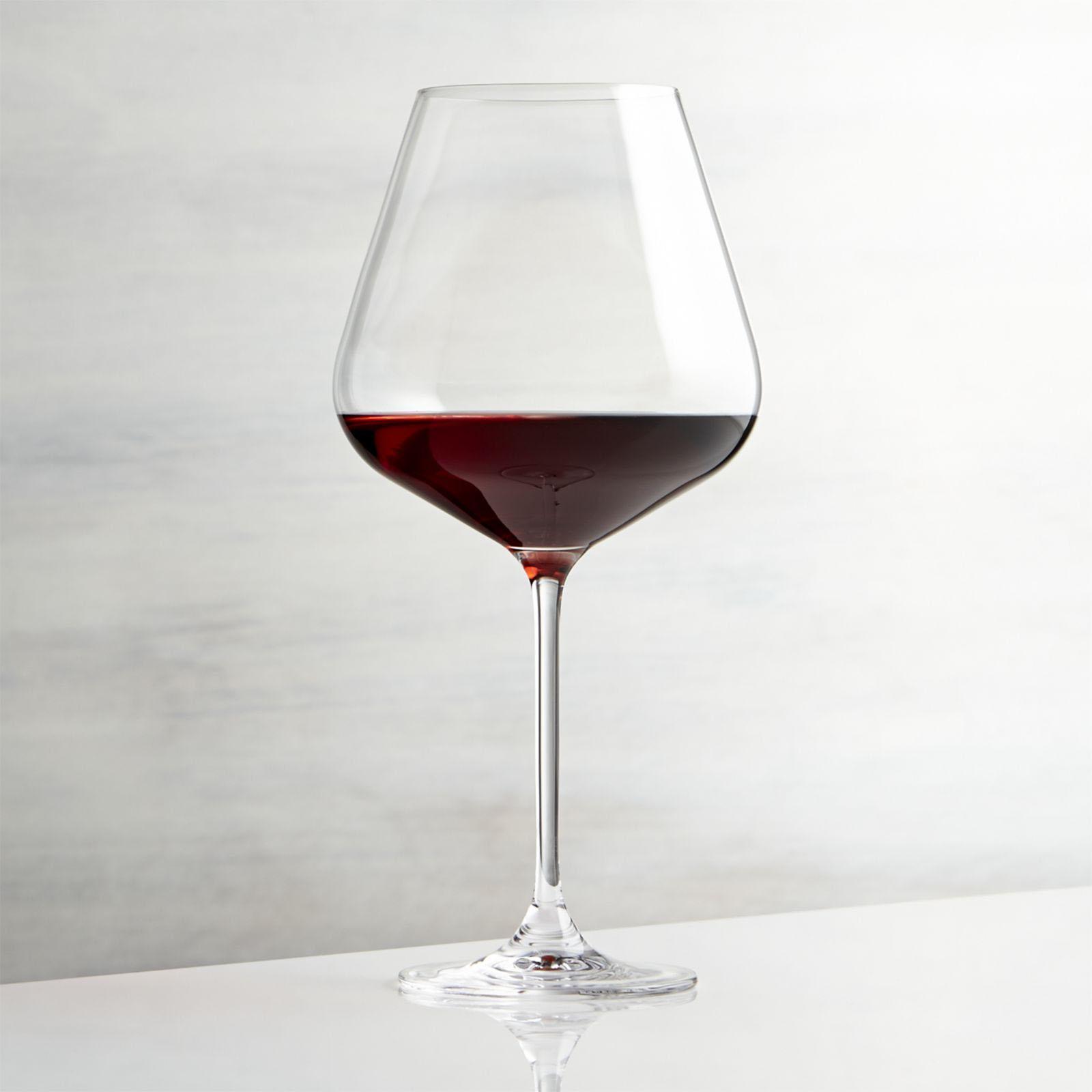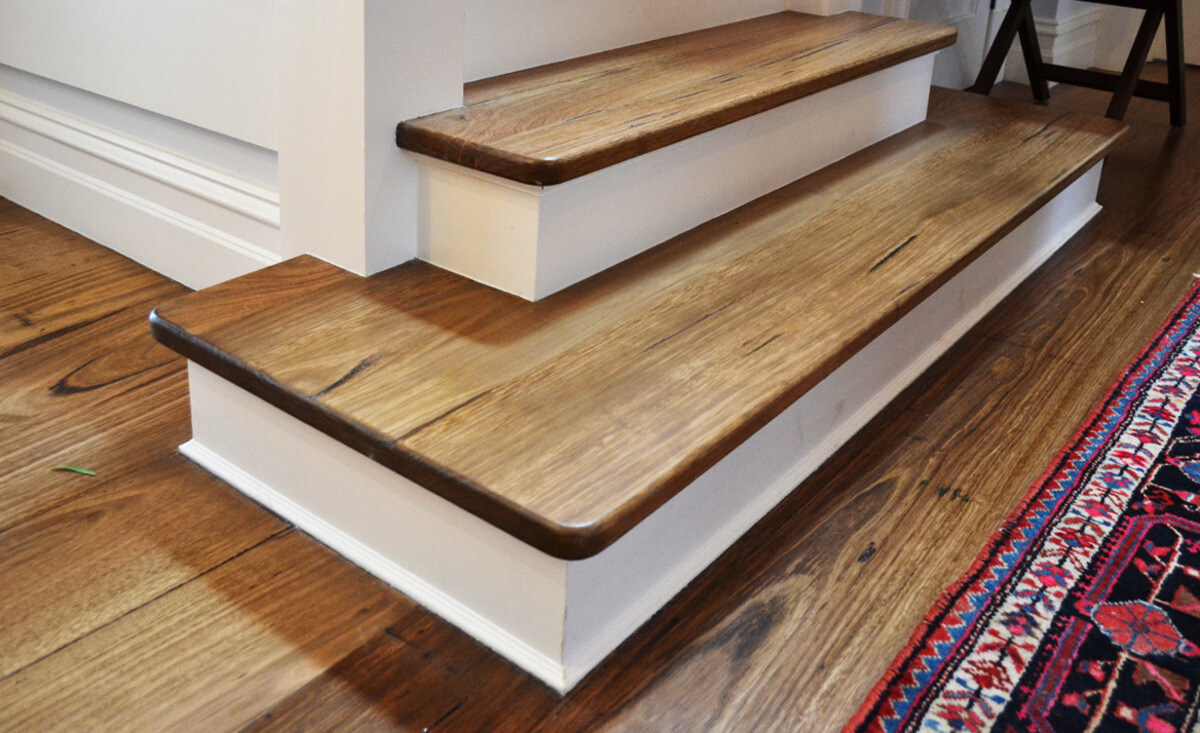

Tableware
Why Do Wine Glasses Have Stems?
Modified: January 21, 2024
Discover the reason behind wine glasses having stems and explore the significance of tableware in enhancing your dining experience.
(Many of the links in this article redirect to a specific reviewed product. Your purchase of these products through affiliate links helps to generate commission for Storables.com, at no extra cost. Learn more)
Introduction
Wine glasses are an essential part of any tableware collection and are synonymous with elegance and sophistication. They come in various shapes, sizes, and styles, but one characteristic that sets wine glasses apart from other types of glassware is their stem. Have you ever wondered why wine glasses have stems? The presence of a stem is not merely for aesthetic purposes; it serves numerous functions that enhance the wine-drinking experience.
In this article, we will delve into the history of wine glasses, explore the functions of the stem, discuss the advantages it provides, and even touch upon the different types of wine glasses available. So, let’s raise our glasses and discover why stems are an integral part of wine glass design.
Key Takeaways:
- Wine glasses with stems serve multiple functions, including maintaining ideal wine temperature, enhancing aromatics, and providing stability. They elevate the wine-drinking experience and add elegance to any occasion.
- Stemmed wine glasses come in various types tailored for specific wines, enhancing their unique characteristics. While traditional, alternative options offer versatility and style, catering to different preferences and occasions.
Read more: Why Are There Different Wine Glasses?
A Brief History of Wine Glasses
The use of glassware for wine dates back to ancient times, with evidence suggesting that the Ancient Egyptians and Greeks drank their wine from glass vessels. However, it wasn’t until the 17th century during the European Renaissance that wine glasses as we know them today started to emerge.
In the early days, wine was often consumed from clay or metal goblets. These vessels were sturdy but lacked the ability to showcase the wine’s color, clarity, and unique characteristics. As the appreciation for wine grew, so did the demand for specialized glassware that would enhance the sensory experience.
The first wine glasses with stems were crafted in Venice, Italy, during the 16th century. These stemmed glasses were made from blown glass, featuring a bowl for holding the wine and a long, elegant stem. The design allowed the drinker to hold the glass without warming the wine with their hand. Additionally, the stem helped to keep the wine’s temperature stable by minimizing direct contact with body heat.
During the 18th century, wine consumption became increasingly popular among the European aristocracy. This led to the production of more elaborate and ornate wine glasses, often featuring intricate designs and decorative elements. The stem became a prominent feature of the glass, symbolizing elegance and refinement.
As glassmaking techniques advanced, different shapes and sizes of wine glasses were developed to suit specific wine styles. The bowl shape, stem length, and rim width were all carefully considered to enhance the aromas, flavors, and overall enjoyment of the wine.
Today, wine glasses continue to evolve, with modern designs incorporating elements of both tradition and contemporary aesthetics. The history of wine glasses reminds us of the centuries-long pursuit of creating the perfect vessel to fully appreciate the complexities of wine.
The Function of the Stem
While the stem of a wine glass may initially seem like a decorative feature, it serves several important functions that contribute to the overall wine-drinking experience.
One of the primary purposes of the stem is to prevent heat transfer from the drinker’s hand to the wine. Wine is best enjoyed at a specific temperature to preserve its flavors and aromas. By holding the glass by the stem instead of the bowl, the heat from the hand is kept away from the wine, helping to maintain its ideal temperature.
In addition, the stem also serves as a handle, allowing the drinker to hold the glass without leaving unsightly fingerprints on the bowl. This is particularly important for wines served at cooler temperatures, such as white wines or sparkling wines that are best enjoyed chilled.
The stem also serves a functional purpose when it comes to pouring and serving wine. Holding the glass by the stem allows for a more controlled grip, preventing unnecessary movement or shaking that could disturb the sediment in older wines or cause a spill. It provides stability and balance, ensuring that the glass remains upright even when placed on an uneven surface.
Furthermore, the stem helps to maintain the visual appeal and clarity of the wine. By holding the glass by the stem, the drinker avoids smudging the bowl with fingerprints or transferring any oils or residue from their hands onto the glass surface. This allows the wine’s beautiful color and clarity to be enjoyed to its fullest.
Moreover, the stem elevates the wine, both literally and figuratively. It adds an element of elegance and sophistication to the act of drinking wine. The presence of a stem creates a sense of occasion and ritual, enhancing the overall experience.
Overall, the stem of a wine glass is not merely a decorative element but a functional and practical component that enhances the wine-drinking experience. It keeps the wine at an optimal temperature, allows for a controlled grip to hold wine glasses properly, maintains visual clarity, and adds a touch of refinement. So, the next time you raise a glass of your favorite wine, remember to hold it by the stem and savor every sip.
Enhancing Aesthetics and Presentation
Aside from their functional purposes, stems play a crucial role in enhancing the aesthetics and presentation of wine glasses. The design and appearance of wine glasses significantly contribute to the overall enjoyment of wine.
One of the primary visual aspects that stems enhance is the elegance and sophistication of the glass. The elongated stem adds a graceful and refined touch to the overall design, elevating the glass from a simple vessel to a piece of art. The stem’s slender and elongated shape creates a sense of balance and proportion, making the glass visually appealing.
Furthermore, the presence of a stem allows the bowl of the wine glass to be raised above the surface, adding a sense of elevation and importance to the wine being served. This elevation not only showcases the wine but also draws attention to its color, clarity, and depth.
In terms of presentation, stems allow for easy handling and serving of wine. The long stem provides a comfortable grip that makes it easier to hold and maneuver the glass, especially when pouring wine or passing it between guests. This ensures a seamless and elegant experience for both the host and the guests.
Additionally, stems provide a practical advantage when it comes to presenting wine at formal events or parties. The stem acts as a handle, allowing the glass to be lifted and toasted without the risk of smudging the bowl or accidentally spilling the wine. This attention to detail in presentation adds a level of sophistication and professionalism to any occasion.
Moreover, the aesthetics of wine glasses with stems often complement the overall table setting and décor. The variety of stem designs, materials, and finishes available allow for customization and coordination with different tableware styles, making them a versatile choice for any occasion.
Overall, stems enhance the aesthetics and presentation of wine glasses by adding an element of elegance, acting as a handle for serving and toasting, and complementing the overall table setting. They elevate the wine-drinking experience, making it more visually pleasing and sophisticated. So, the next time you raise a glass of wine, take a moment to appreciate the beauty and artistry of the stem that enhances your enjoyment.
Preventing Heat Transfer
The stem of a wine glass serves an important function in preventing heat transfer from the drinker’s hand to the wine. Wine is extremely sensitive to temperature, and maintaining the appropriate serving temperature is crucial for preserving its flavors and aromas.
When wine is held in a glass without a stem, the drinker’s hand comes into direct contact with the bowl. The warmth from the hand can quickly raise the temperature of the wine, especially if the wine is served at a lower or cooler temperature. Higher temperatures can potentially ruin the delicate balance of the wine and diminish its taste.
By using a wine glass with a stem, the drinker can hold the glass without directly touching the bowl. The stem acts as a barrier, keeping the heat from the hand away from the wine. This allows the wine to maintain its intended temperature for a longer period, ensuring the optimal drinking experience.
Furthermore, the stem also prevents unwanted condensation from forming on the bowl. Condensation can occur when the temperature difference between the glass and the surrounding environment is significant. When the glass is held directly, the warmth from the hand can cause the bowl to become cooler, resulting in condensation forming on the exterior of the glass. This can make the glass slippery and uncomfortable to hold. By using the stem as a handle, the drinker avoids contact with the bowl, minimizing the formation of condensation.
It’s important to note that different types of wine require different serving temperatures to showcase their unique characteristics. For example, white wines are often served chilled, while red wines are typically served at room temperature. By using a stemmed wine glass, the temperature of the wine can be preserved more effectively, allowing the drinker to fully appreciate the nuances and complexities of each wine variety.
Overall, the stem of a wine glass plays a crucial role in preventing heat transfer from the hand to the wine, ensuring that the wine remains at the desired temperature for optimal enjoyment. It helps to preserve the delicate flavors and aromas of the wine and prevents condensation from forming on the glass. So, next time you reach for a glass of wine, be sure to hold it by the stem and savor the experience.
When holding a wine glass by the stem, it prevents the heat from your hand warming up the wine, allowing the wine to stay at the optimal serving temperature.
Read more: What To Do With Wine Glasses?
Improving Aromatics and Flavors
The stem of a wine glass doesn’t just serve a practical purpose; it also plays a significant role in enhancing the aromatics and flavors of the wine. The design and construction of the glass, including the stem, can greatly impact how we experience the wine.
One of the key elements is the distance between the wine and the drinker’s nose when taking a sip. Holding a wine glass by the stem elevates the bowl away from the face, allowing the aromas to concentrate within the glass. This positioning encourages the swirling and evaporation of volatile compounds, releasing the wine’s aromatic bouquet.
Additionally, the shape and size of the bowl, as well as the width of the rim, are essential factors in capturing and directing the aromas toward the nose. Winemakers carefully craft their wines to showcase particular scents and flavors, and the shape and design of the glass can either enhance or hinder these characteristics. The stem ensures that the drinker can comfortably bring the glass to their nose, allowing them to fully appreciate the wine’s aromatics.
Furthermore, the material and thickness of the stem may influence the temperature of the wine as it is being consumed. Thin glass stems allow for efficient heat transfer, making them ideal for wines that need a slight temperature adjustment for optimal enjoyment. Thicker stems, on the other hand, provide insulation, helping to maintain the desired serving temperature for longer periods.
The stem also contributes to the overall tasting experience by enabling proper swirling of the wine in the glass. Gentle swirling allows the wine to interact with the air, releasing additional aromas and flavors. The stem acts as a handle to facilitate this motion without the risk of spilling or splashing the wine.
In addition to enhancing the aromatics, the stem also plays a role in the taste perception. Holding the glass by the stem prevents the hand from inadvertently warming the wine, which could potentially alter its flavors. By maintaining the proper serving temperature, the wine’s taste profile remains intact, allowing the drinker to experience the full range of flavors intended by the winemaker.
Overall, the stem of a wine glass is instrumental in improving the aromatics and flavors of the wine. By enabling the concentration and release of aromas, providing a comfortable and controlled grip for swirling, and maintaining the ideal serving temperature, the stem enhances the tasting experience. So, next time you savor a glass of wine, appreciate the role that the stem plays in intensifying the sensory journey.
Stability and Balance
One of the often overlooked but critical functions of the stem in a wine glass is to provide stability and balance. A well-designed stem ensures that the glass remains steady on various surfaces, preventing accidental spills or tipping over.
The stem acts as a point of support, allowing the glass to stand upright, even on uneven or sloping surfaces. Whether it’s a crowded dinner table, a picnic blanket, or an outdoor terrace, the stem provides stability and prevents the glass from easily toppling over.
Moreover, the length and shape of the stem are carefully considered to achieve optimal balance. A properly balanced wine glass allows for effortless handling and enhances the overall drinking experience. The weight distribution between the stem and the bowl ensures that the glass feels comfortable in the hand and prevents any unwarranted movements or tilting.
The stability and balance provided by the stem are particularly important when serving wine in a social setting or during formal events. It instills confidence in the drinker by eliminating the risk of accidental spills and ensures that the focus remains on enjoying the wine and engaging in conversation.
Furthermore, the stability and balance contribute to the visual appeal of the wine glass. A perfectly balanced glass creates a sense of harmony, elegance, and sophistication, further enhancing the overall aesthetic and experience.
When it comes to wine tasting or swirling, the stem’s stability and balance allow for easy and controlled movements. This ensures that the wine remains safely within the glass during the swirling process, preventing any accidental spills or splashes. Additionally, the stable and well-balanced design of the stem aids in the controlled and precise pouring of wine.
Overall, the stem of a wine glass serves an important function in providing stability and balance. It allows the glass to remain steady on different surfaces, enhances the visual appeal, and ensures safe handling during wine tasting and pouring. The stem’s stability creates a sense of confidence and elegance, enhancing the overall wine-drinking experience.
Types of Wine Glasses with Stems
Wine glasses come in a variety of shapes and sizes, each designed to enhance the unique characteristics of different types of wine. While all wine glasses have stems, their bowl shape, size, and overall design can vary depending on the wine being served. Here are some popular types of wine glasses with stems:
- Red Wine Glasses: Red wine glasses typically have larger bowls with wider openings. The larger surface area allows for greater exposure to the air, enhancing the wine’s aromas and flavors. The stem helps to maintain the wine’s temperature and allows for easy swirling to release the wine’s potential.
- White Wine Glasses: White wine glasses tend to have smaller bowls compared to red wine glasses. The smaller bowl helps to maintain cooler serving temperatures and preserves the delicate aromatics of white wines. The stem allows the wine to be held without warming it and facilitates swirling to aerate the wine.
- Sparkling Wine Glasses: Champagne flutes are the most common glasses used for sparkling wines. They have tall, narrow bowls that help preserve the bubbles and maintain the wine’s effervescence. The stem provides stability and allows the drinker to hold the glass without interfering with the delicate bubbles.
- Fortified Wine Glasses: Fortified wines like Port and Sherry are often served in smaller glasses known as port or sherry glasses. These glasses have smaller bowls and are held by the stem to prevent the wine from warming up too quickly while sipping.
- Aromatic Wine Glasses: Aromatic wines, such as those made from Gewürztraminer or Riesling grapes, benefit from glasses with tall bowls and narrow openings. These glasses help concentrate the aromas, allowing the drinker to fully appreciate the wine’s floral and fruity nuances.
- Bordeaux Glasses: Bordeaux glasses are designed specifically for bold red wines like Cabernet Sauvignon and Merlot. They have taller bowls with a wider base, allowing for ample aeration and showcasing the complexity of these robust wines. The stem provides stability and a comfortable grip when sipping.
- Burgundy Glasses: Burgundy glasses are tailored for delicate and aromatic red wines such as Pinot Noir. They have wider, rounder bowls that maximize surface area, allowing the wine’s aromas to develop. The stem provides balance and prevents the heat from the hand from affecting the wine’s temperature.
These are just a few examples of the different types of wine glasses available. It’s worth noting that there are countless variations and styles within each category, allowing for personal preferences and specific wine enjoyment.
Choosing the right wine glass with stem will enhance the overall wine-drinking experience by highlighting the unique qualities of each wine. So, whether you’re a red wine enthusiast, a lover of sparkling wines, or a fan of aromatic whites, selecting the appropriate wine glass can elevate your enjoyment and appreciation of the wine.
Alternatives to Stemmed Wine Glasses
While stemmed wine glasses are traditional and widely used, there are also alternative options available for those seeking a different wine-drinking experience. These alternatives offer unique designs and functionality while still allowing for the appreciation of wine’s flavors and aromas. Here are a few alternatives to traditional stemmed wine glasses:
- Stemless Wine Glasses: Stemless wine glasses have become increasingly popular in recent years. These glasses eliminate the long stem and instead have a flat base, making them more stable and less prone to tipping. Although they lack the elegance and tradition of stemmed glasses, stemless wine glasses offer a modern and casual aesthetic. They are also easier to store and are often more durable due to their sturdier construction.
- Tumblers or Wine Goblets: Wine tumblers or goblets are another alternative to stemmed wine glasses. These glasses have a wider and shorter design, similar to traditional drinking glasses. They are often made from thicker glass or other materials like stainless steel or crystal. Tumblers provide a more casual and relaxed drinking experience, and their broader shape can enhance the interaction of wine with air, releasing aromas and flavors.
- Wine Tasting Glasses: Wine tasting glasses, also known as ISO glasses, are small, tulip-shaped glasses specifically designed for professional wine tastings. They have a stem, but their small size and unique shape allow for concentrated tasting and evaluation of the wine’s aromas and flavors. These glasses are popular among wine enthusiasts and professionals for their precision in analyzing the subtleties of different wines.
- Wine Decanters: Wine decanters are vessels used to aerate and serve wine. Although they don’t have stems like traditional wine glasses, they serve as an alternative for allowing the wine to breathe and develop its aromas. Decanters come in various shapes and designs, often with wide bases and narrow openings, which helps separate the sediment from the wine. When serving wine from a decanter, the drinker can use separate glasses or tumblers.
- Wine Tumblers with Stems: For those who prefer the convenience of stemless glasses but still want the benefits of a stem, wine tumblers with stems offer a compromise. These glasses feature a stem attached to a short, wide, stemless glass. This design retains the stability of a stemless glass while providing a grip that minimizes the transfer of heat to the wine. They offer a modern twist on traditional stemmed glasses.
These alternative options provide versatility and may cater to different preferences and occasions. From casual gatherings to formal wine tastings, there’s an alternative wine glass style to suit every need. While these alternatives may not possess the same level of elegance as traditional stemmed wine glasses, they offer unique features and aesthetics that can enhance the enjoyment of wine.
Ultimately, the choice of glassware comes down to personal preference and the specific occasion or context in which the wine is being consumed. Whether you opt for traditional stemmed glasses or explore alternative options, what matters most is the ability to savor the aromas, flavors, and nuances of the wine in a way that brings you pleasure.
Conclusion
Wine glasses with stems are more than just vessels for serving wine; they enhance the entire wine-drinking experience. Stemmed glasses serve multiple important functions, including preventing heat transfer, improving aromatics and flavors, providing stability and balance, and enhancing the aesthetics and presentation of wine.
The stem of a wine glass prevents the transfer of heat from the hand to the wine, ensuring that the wine remains at its optimal serving temperature. This allows the drinker to fully appreciate the wine’s complex flavors, aromas, and nuances. Additionally, stems help to maintain the visual clarity of the wine and prevent unsightly fingerprints on the bowl, ensuring a visually appealing presentation.
Furthermore, stems provide stability and balance to the glass, preventing accidental spills and maintaining a sense of elegance and sophistication. The stem also serves as a handle, allowing for controlled pouring, swirling, and toasting during social gatherings or formal occasions.
There are various types of wine glasses with stems available, each designed to enhance the specific characteristics of different wines. From red and white wine glasses to sparkling wine flutes and fortified wine glasses, the design and shape of the stem are carefully considered to enhance the sensory experience.
While traditional stemmed wine glasses remain popular, there are alternative options such as stemless glasses, tumblers, wine tasting glasses, and wine decanters that offer unique styles and functionalities. These alternatives cater to various preferences and occasions, providing flexibility and versatility in wine enjoyment.
Ultimately, the choice of wine glasses rests on personal preference and the context in which the wine is being served. Regardless of the style of glass chosen, the key is to appreciate and savor the wine, allowing the aromas, flavors, and complexities to unfold.
So, whether you raise a stemmed wine glass to experience the full potential of a rich red wine or enjoy a casual glass of wine from a stemless tumbler, let the stem be a reminder of the rich history, craftsmanship, and elegance behind the wine-drinking tradition.
Frequently Asked Questions about Why Do Wine Glasses Have Stems?
Was this page helpful?
At Storables.com, we guarantee accurate and reliable information. Our content, validated by Expert Board Contributors, is crafted following stringent Editorial Policies. We're committed to providing you with well-researched, expert-backed insights for all your informational needs.














0 thoughts on “Why Do Wine Glasses Have Stems?”